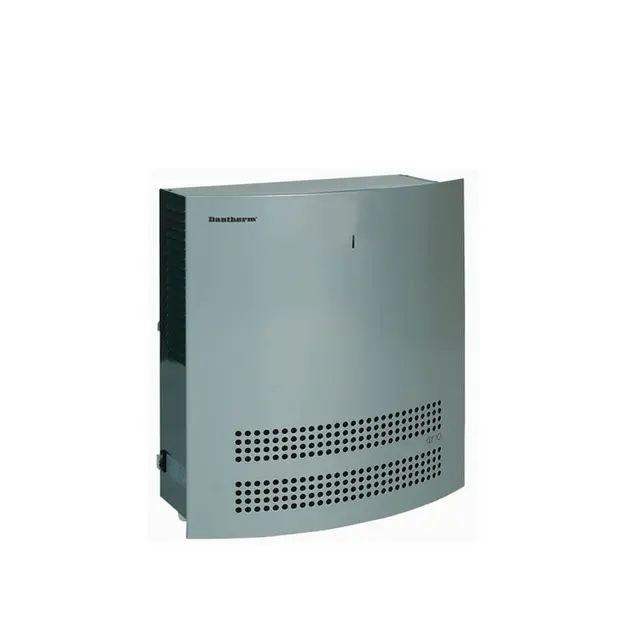Combating climate change in castles through dehumidification

- Home
- Insights
- Humidity control and drying insights
- Combating climate change in castles through dehumidification
While castles were built to withstand attacks, the consequences of climate change have made them even more susceptible to moisture damage caused by high humidity. Learn more about the threat of humidity to these historic sites and how to battle this with an effective dehumidification solution.
The rich, illustrious history of Europe is preserved in the buildings, artefacts and documents that have survived with us for centuries at a time. The continent’s castles and heritage sites are arguably the most striking examples of the legacy we have inherited and seek to protect for future generations.
However, as powerful and imposing these fortresses appear, within them lies a fragility that more modern buildings are less susceptible to – high humidity levels. While over time excessive moisture in the air can critically weaken the structure of practically any building, the age and rudimentary construction of these castles make them even more vulnerable.
The impact of climate change has only accelerated this, with significant switches in humidity and other sources of water damage threatening to erode away these massive monuments of our history.
Below, we discuss the threat posed by high humidity on our fabled castles, and why this makes a fixed dehumidification solution vital to their long-term survival.
Castles and climate change
With many castles and similar structures across Europe having stood for hundreds (or even thousands) of years, it would be forgivable to believe they are built to last forever. But, as climate change has evolved in recent decades, the challenge of maintaining these sites has grown substantially.
As temperatures consistently rise overall, this will naturally have an impact on humidity levels as well. But, it is not so much the increase in these that is the issue, but the greater risk of significant fluctuations in both. Substantial changes in humidity and temperature can cause the materials typically found in castles to deteriorate noticeably faster.
Furthermore, there is the risk of climate change encouraging more rainfall, stormier weather and flood damage. Again, this can all greatly increase the moisture level in the fabric of these structures which, if left unchecked, can wear away the rigidity of the materials within the castle.
The recent fears over the future of Edinburgh Castle in Scotland is a clear example of this. With its heightened risk of flood damage due to its positioning and the overall shifts in humidity and temperature over time, the castle was placed under the “Heritage on the Edge” project in an attempt to protect it from this threat.
The risks of high humidity in castles
How can structures that were built to withstand sieges and catapult barrages today find themselves threatened by simple water? It is a combination of the impact of time and the materials primarily used in their development.
Over time, castles exposed to the air will naturally absorb rainfall and further moisture that lands on the surface. They were typically built with “breathable” materials like stone, soft brick, lime-based mortars and unfired earth – these let in moisture more easily, but are quick to dry during the drier months of the year.
Most forms of deterioration that affect castles, as well as many other heritage sites, can be attributed to excessive moisture levels (often encouraged by high humidity):
It causes the decay of timber and other wood within the structure
It mobilises salts that harm masonry materials
It enhances the consequences of frost damage
It spoils any plasterwork, decorations or artefacts within the site
It can create an unhealthy atmosphere for visitors
While these structures are inherently strong (and have needed to be to survive so long), the unavoidable truth is that worn-down, historic castles will suffer more from water damage than modern structures with damp-proof courses (DPCs) or damp-proof membranes (DPMs).
This means when water damage does take hold, the damage can be difficult to resolve. Take the example of Highclere Castle in the UK, better-known as the home of Downton Abbey. Moisture damage within the castle cost the owners nearly EUR13.9 million (GBP12 million) to repair and restore.
As well as the structure of these sites, it’s also vital to consider the range of artefacts, relics, records, artwork, books and more that are held on these sites. Again, these are all susceptible to high humidity and the moisture this generates, which may over time irreparably damage these items, or at least endanger their original luster.
For instance, a roof leak in Lincoln Castle (UK) in 2016 led to such a significant rise in humidity that it endangered the site’s copy of the 1215 Magna Carta, one of the country’s most legendary documents.
Then, there are castles’ reputations as places of great public interest. As heritage sites, these castles will have people on-site to maintain and manage the grounds, and welcome thousands of visitors in a typical year.
While this tourism often generates much-needed revenue for these sites, any wet clothing or accessories they bring into these castles from the outside (coats, jackets, umbrellas, etc.) can all raise the humidity and introduce more moisture into these environments.
This again makes managing humidity a top priority in creating a comfortable, welcoming environment on these sites. It also reduces the likelihood of mould and other contaminants forming that could put the health and wellbeing of staff and visitors at risk.
Managing humidity levels with the right dehumidification solution
With the need to restrict moisture levels on these historic sites crucial to their preservation, the growing pressures presented by climate change make systems that control humidity on-site more crucial than ever to avoid costly restoration works or irreparable damage.
These negative consequences can be avoided by introducing robust Dantherm Group dehumidifiers to the site. Providing the ideal environmental conditions to protect the castle’s structure and possessions from the ongoing threat of humidity damage, our powerful solutions keep these treasured monuments intact for the public to enjoy.
Our highly-experienced team will work closely with you to introduce a dependable, discreet solution to maintain relative humidity at safe levels, while not intruding on the historic ambience of the structure itself. We tailor all our systems to the exact requirements of our customers, delivering the most efficient, effective solution for the situation at hand.
Built-in electronic hygrostats and thermostats
Compliant with F-gas regulations
Simple and effective control systems
Straightforward to monitor and maintain
Preserve and protect your castles and wider heritage sites from the threat of humidity with the best possible solution. Speak to us today about our selection of stationary dehumidifiers.
Related products
Featured insights

Are your valuable artefacts at risk?

Why unregulated humidity creates big problems for paper

Discover how to overcome the humidity challenges of preserving your artefacts
Need help with choosing the right solution? Our team of over 100 climate control experts can assist.
You can also reach out or join the discussion on our Social Media. Check out our LinkedIn page.








